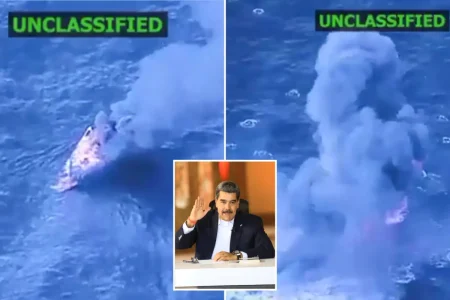Trump and Takaichi Meet in Tokyo: Cordial Exchange Amid Ongoing Trade Talks
During a recent diplomatic visit to Tokyo, President Donald Trump and Japanese Prime Minister Sanae Takaichi engaged in a warm exchange of pleasantries and mutual compliments. The meeting, which took place against the backdrop of Japan’s vibrant capital, showcased the personal rapport between the two leaders as they navigated the complex landscape of US-Japan relations. President Trump, known for his emphasis on personal diplomacy, appeared to establish an easy dialogue with Takaichi, who has only recently taken the helm of Japan’s government. Their interactions were marked by smiles and affirmations of the strong alliance between their nations, reflecting the decades-long partnership that has defined US-Japan relations since the post-war era.
Despite the cordial atmosphere and public display of bilateral friendship, the substance of the discussions revealed no significant breakthroughs on the pressing issue of trade negotiations. These talks have been ongoing for months, with both nations seeking to address imbalances and establish new frameworks for economic cooperation in an increasingly competitive global landscape. The meeting’s diplomatic choreography—complete with ceremonial greetings and carefully worded joint statements—served to maintain positive appearances while masking the substantive challenges that remain unresolved between the economic powerhouses. Observers noted that beneath the surface congeniality, both leaders were likely engaging in careful positioning for their respective national interests.
The trade discussions continue to center around several key sticking points, including automotive exports, agricultural products, and technological cooperation. Japan, as a major exporter of vehicles to the American market, has faced persistent pressure from the Trump administration regarding market access and trade deficits. Similarly, American agricultural interests have sought greater entry into Japanese markets, particularly following the United States’ withdrawal from the Trans-Pacific Partnership under President Trump’s direction. These economic tensions exist alongside strategic cooperation on regional security concerns, creating a multifaceted relationship that defies simple characterization.
During their public appearances, both leaders emphasized the historical strength of the US-Japan alliance and its importance to regional stability in the Indo-Pacific. Prime Minister Takaichi, Japan’s first female prime minister and a politician known for her conservative stance on national security, appeared eager to reinforce Japan’s position as America’s foremost ally in Asia. President Trump reciprocated with praise for Japan’s contributions to regional security and economic development, while subtly reiterating his administration’s focus on “fair and reciprocal” trade relationships. This diplomatic balancing act reflected the nuanced nature of modern US-Japan relations, which must accommodate both competition and cooperation across various domains.
The Tokyo meeting occurs at a pivotal moment for both leaders domestically. For President Trump, international engagements provide opportunities to project strength and leadership on the global stage while navigating a contentious political landscape at home. For Prime Minister Takaichi, hosting the American president represents an important milestone in establishing her credentials as a capable steward of Japan’s most important alliance. The carefully orchestrated public events, including a state dinner and cultural exchanges, served not only diplomatic purposes but also provided valuable political imagery for both leaders’ domestic audiences, who remain attentive to the handling of this crucial bilateral relationship.
As the visit concluded without major policy announcements, analysts suggested that both sides were likely content to maintain the status quo while continuing negotiations behind closed doors. The absence of public disagreements indicated a shared desire to present a united front, particularly in light of regional challenges from China and North Korea. The symbolic value of the meeting—reinforcing the endurance of US-Japan ties amid global uncertainty—may ultimately prove more significant than any immediate policy outcomes. As President Trump departed Tokyo, both leaders expressed optimism about the future of bilateral relations, even as the substantive work of resolving trade differences continues among their respective negotiating teams in the months ahead.











